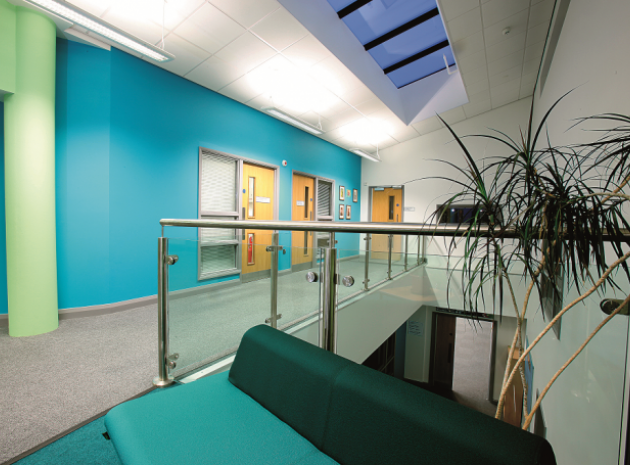The conditions of our schools and their learning environments are set to decline as the demand for school places increases. According to the National Audit Office’s report Capital Funding for Schools, the cost of returning all school buildings to ‘satisfactory’ or better conditions will double between 2015 and 2021 at a cost of £6.7 billion.
Schools and their students will, therefore, need to find creative ways to regenerate learning environments if they are to improve performance, engagement and enjoyment.
The writing’s on the wall (and the table)
A full redevelopment or extension is rarely possible due to cost, so ensuring that a school can optimise its space while remaining in budget is essential. At the Isle of Portland Aldridge Community Academy, a core ambition was the promotion of greater peer-to-peer learning. A key driver of this has been the effective use of writable surfaces in their school. Tables, walls and even chairs have been turned into spaces where learners can remove themselves from the isolation of textbooks and work in groups to learn. Not only has it created the opportunity for collaboration, it’s also encouraged students to find a new appreciation for each other’s work. Writable surfaces are integrated throughout the school and across all year groups, so every learner, regardless of their age, can experience these benefits.
Spaces to think
Calming spaces to which children can retreat can reduce stress and boost wellbeing. These areas can be within a classroom or an adjoining room and provide considerable support for children with special educational needs and disabilities.
Following an inspection in 2013, Southbrook, an SEN school in Devon, was challenged to improve its literacy and reading. “Reading is not always easy if you have learning difficulties and often pupils have a very negative view of reading, which wasn’t helped by the school library being outdated,” explains assistant headteacher, Alan Tilley.
Southbrook’s solution was to convert an old double decker bus into a new library. Enlisting local graffiti artists, the bus was transformed into a reading space unlike any other. The school has since created a pupil librarian scheme, which has dramatically improved reading results at Key Stage 3.
Professor Heppell’s top five tips for improving learning environments…
Thinking space
1. Be learner led
Let the students, whatever their age, research and explore what others have done that was effective. Don’t do it to your students, do it with them, and let them lead.
2. Optimise for learning
Get the paper off the windows and ventilate. Turn the temperature down and light levels up. Set protocols for sound levels and ask students to monitor this – a decibel meter on a tablet is a great way to build noise awareness.
3. Create zones within rooms
You could have zones for whole-class instruction, quiet study, collaborative conversations, teamwork, presentation and exhibition. Colour and design can signal what learning activities are appropriate.
4. Have writable surfaces
Write on desks, walls, windows – when work is visible, social cognitive science says we remember it better, and the pace accelerates too.
5. Toilets matter
Research shows the design of school toilets directly affects school performance (and parents know that many pupils are reluctant to use badly designed toilets). Better toilets improve everything from attendance to behaviour. It is a great place to start a redesign for better learning!
To find out more about the Dulux Smarter Spaces service, visit duluxsmarterspaces.co.uk. Alternatively, give the dedicated team a call on 033 3222 7022 so they can help to get your Dulux Schools Account set up.
Professor Stephen Heppell is a founding member of the Dulux Smarter Spaces initiative which is designed to help teachers and children thrive through the power of the school environment. Dulux Smarter Spaces is championing how learning environments impact learning outcomes through colour and design. As a former teacher, Stephen’s advice is always a mix of day-to-day pragmatism and new insights into research.






